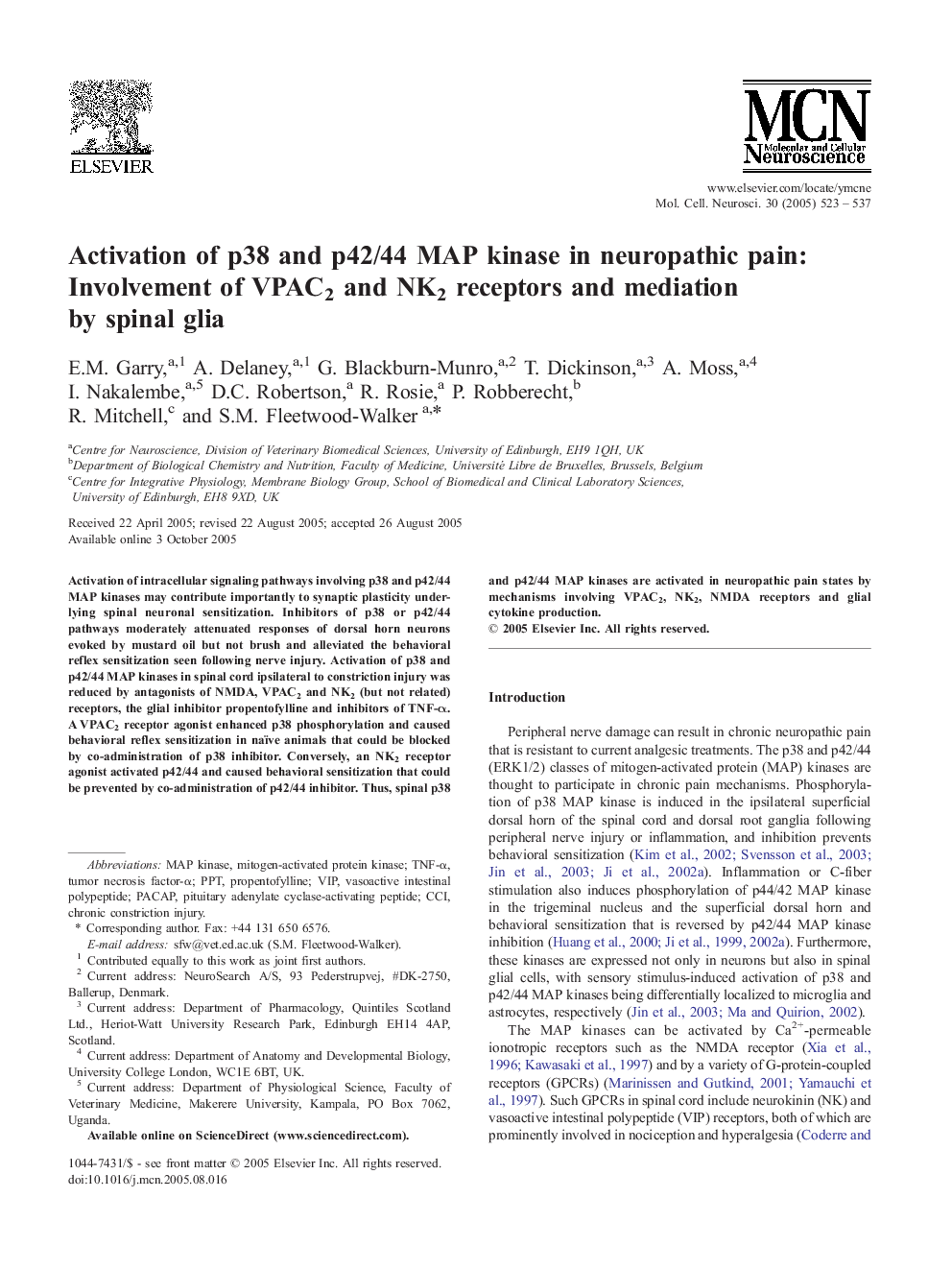| Article ID | Journal | Published Year | Pages | File Type |
|---|---|---|---|---|
| 9916169 | Molecular and Cellular Neuroscience | 2005 | 15 Pages |
Abstract
Activation of intracellular signaling pathways involving p38 and p42/44 MAP kinases may contribute importantly to synaptic plasticity underlying spinal neuronal sensitization. Inhibitors of p38 or p42/44 pathways moderately attenuated responses of dorsal horn neurons evoked by mustard oil but not brush and alleviated the behavioral reflex sensitization seen following nerve injury. Activation of p38 and p42/44 MAP kinases in spinal cord ipsilateral to constriction injury was reduced by antagonists of NMDA, VPAC2 and NK2 (but not related) receptors, the glial inhibitor propentofylline and inhibitors of TNF-α. A VPAC2 receptor agonist enhanced p38 phosphorylation and caused behavioral reflex sensitization in naïve animals that could be blocked by co-administration of p38 inhibitor. Conversely, an NK2 receptor agonist activated p42/44 and caused behavioral sensitization that could be prevented by co-administration of p42/44 inhibitor. Thus, spinal p38 and p42/44 MAP kinases are activated in neuropathic pain states by mechanisms involving VPAC2, NK2, NMDA receptors and glial cytokine production.
Keywords
Related Topics
Life Sciences
Biochemistry, Genetics and Molecular Biology
Cell Biology
Authors
E.M. Garry, A. Delaney, G. Blackburn-Munro, T. Dickinson, A. Moss, I. Nakalembe, D.C. Robertson, R. Rosie, P. Robberecht, R. Mitchell, S.M. Fleetwood-Walker,
